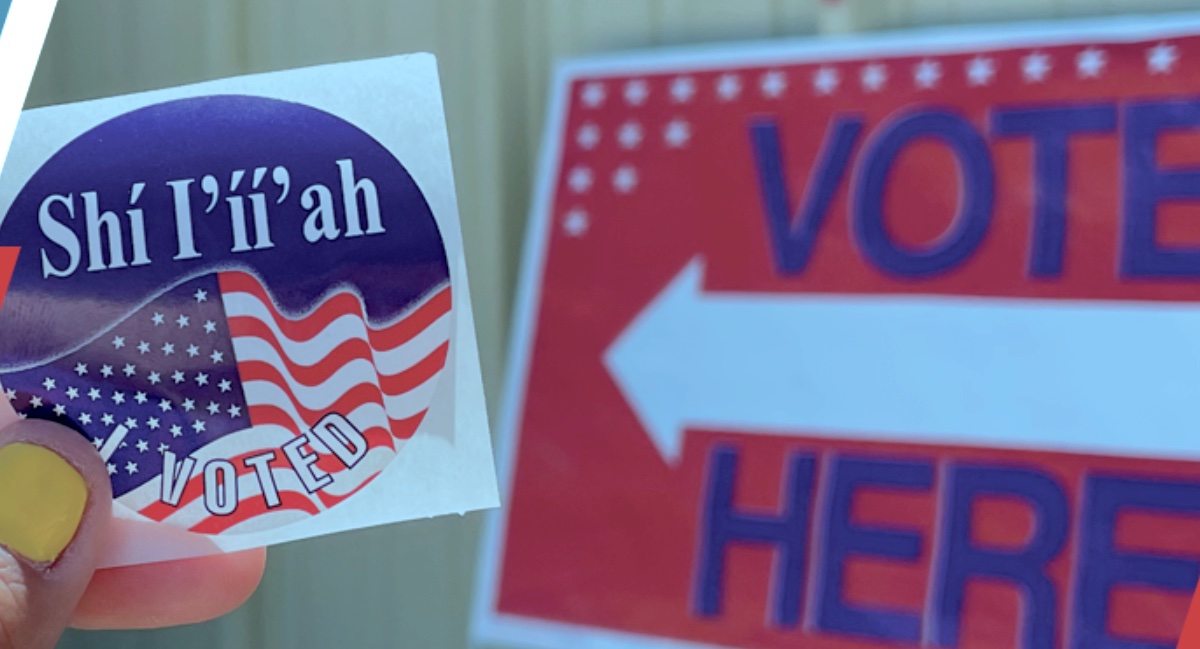Native Americans and Alaska Natives living on tribal lands face persistent and unique barriers to voting that have contributed to consistently lower turnout in both midterm and primary elections, according to a new study from the Brennan Center for Justice.
Between 2012 and 2022, voter participation among residents of federally recognized tribal lands was 7 percentage points lower than the national average during midterm elections and 15 percentage points lower in presidential races.
Those figures translate to hundreds of thousands of Native votes never having been cast over the previous six elections covered by the study, which looked at voter turnout across 21 states that have tribal lands with populations of 5,000 or more residents.
“While de jure disenfranchisement of Native Americans no longer exists, de facto disenfranchisement continues to flourish, as is evident in the turnout gap between voters on and off tribal lands,” the authors write.
A lack of proximity to polling places is a key challenge, with Native voters having to travel anywhere from 30 to 100 miles in some cases to cast a ballot.
“These are exponential barriers. And it is something we see across many groups,” says lead author Chelsea Jones, noting studies that show lower turnout when polling places are moved even just one to two miles away.
Poverty and limited access to reliable transportation compound the issues for Native voters on tribal lands. A high proportion of residents also do not have traditional addresses, meaning they don’t have street names or house numbers and so therefore rely on PO boxes. The study notes that many jurisdictions don’t send mail-in ballots to PO boxes.
Finally, a slew of states enacted restrictive voter ID laws following the 2020 election that prevent Native voters from using their tribal IDs, in some cases even in states where it is legal to do so.
“A lot of people are using their tribal IDs for everyday activities,” says Jones, “and that is a significant and unique barrier.”
The study also found that turnout is consistently lower in areas with higher concentrations of Native voters, a reversal of earlier studies that show higher turnout among voters of color in areas where they are a majority.
The findings point to the unique set of challenges that Native voters face, challenges not fully addressed by the 1965 Voting Rights Act (VRA), which succeeded in increasing voter registration and turnout among Blacks and Latinos yet fell short in addressing “many of the unique barriers faced by Indigenous communities.”
Jones says passage of the Native American Voting Rights Act, which has stalled in Congress, would go a long way to addressing these issues by, among other measures, prohibiting the use of restrictive ID laws that exclude tribal IDs, increasing language assistance, and designating central addresses for voters with nonstandard residential addresses.
“Our hope is that attention continues to be paid to advancing Native voting rights that address some of the unique barriers that the VRA has not yet done,” Jones notes.
While the Brennan study did not cover the 2024 election results, one poll by Edison Research found 65% of Native American voters voted for Republican candidate Donald Trump. The poll has been widely cited by mainstream news outlets and has become a key talking point for Republicans celebrating the apparent surge in support among Native voters.
Native American groups, including the Indigenous Journalists Association, described the survey as “highly misleading and irresponsible.”
The poll surveyed 229 self-identified Native Americans, none of whom live on tribal lands. In a statement to AP, Edison acknowledged the small sample size but said its goal was to provide enough data to “examine large demographic and geographic subgroups.”
A statement from the Native American Rights Fund called the survey “an inaccurate representation of our Native communities and perspectives,” noting historic parallels between rising Native populations and support for Democratic candidates.
“It is important to gather and share accurate data about Native voter preferences, but it is equally important that we acknowledge the systemic obstacles that are keeping Native voices from being heard at all,” said NARF Staff Attorney Jacqueline De León.
For her part, Jones declined to comment on voting patterns during the November election, citing “data inequities” that “don’t fully capture native perspectives in a way that is generalizable.” She noted, however, “we did see some of the same trends we are speaking to in our study.”
That includes the denial of tribal IDs, polling stations that are far removed from where voters live, and the denial of nearby satellite locations where voters can leave their ballots in lieu of official polling stations.
“Our democracy works best when everyone has a say… our job should be to encourage and open the doors for people to do that,” she notes.
“Anyone who is a part of the fabric of America should have their voice heard,” Jones adds. “It is incredibly disheartening for us to exclude certain groups from that, especially groups who we have already taken so much from.”




